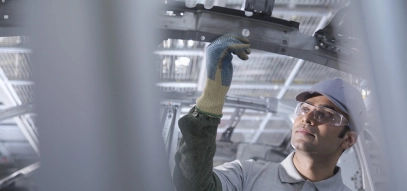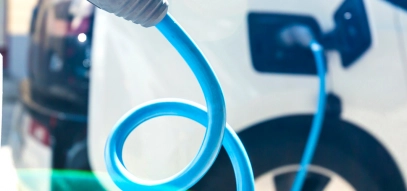
Demonstrating compliance is key for OEM sustainability aims
As a first step in directing capital investments toward sustainable activities, the objective for OEMs is to measure the share of eligible activities contributing to the first two objectives: climate change mitigation and adaptation.
Following analysis of the first publications relating to the three eligibility ratios of the EU’s six leading OEMs, while the methodology for accounting for sales is not debated, some manufacturers have used simplification measures. In particular, by including all tangible fixed assets such as land, machinery, tools and equipment and other tangible fixed assets in the capital expense (CAPEX) ratio calculations or by considering only research and development costs for the operating expenses (OPEX) ratio.
Although the level of transparency is heterogeneous, all manufacturers detail the methodologies for calculating the three ratios. The communications of the Volkswagen and Mercedes-Benz groups could serve as an example of transparency. In this context, we analysed the methodologies detailed by the six OEMs.
Methodologies used
In terms of development methodology, one-third of OEMs in the panel has designated a committee responsible for compliance with the Taxonomy regulation. In addition, 67% publish cross-references to the notes to the financial statements to justify the raw data ratios. As an example of good practice, Mercedes-Benz has had all three ratios audited by one of its auditors to a moderate level of assurance.
Regarding calculation methodology, 100% of the panel are included in the scope of financial consolidation and 50% state that they have used estimation methodologies or allocation keys. One-third have only considered research and development costs when calculating the OPEX ratio. Also, 100% thought all vehicles, regardless of engine type, to be eligible.
Specific Findings
Unlike the other manufacturers, the BMW Group considered sales of spare parts and components, particularly in the context of after-sales or repair activities, as not eligible. This explains the low ratio obtained compared to the other panellists.
The Volvo Group has excluded the production of non-transport vehicles from the regulatory ratios but has included them in a voluntary indicator under ‘Other low-carbon manufacturing technologies’ activity.
Also, Volvo is the only OEM to include machinery production to a greater extent in the ‘Other low-carbon manufacturing technologies’ activity. Volvo uses a usage-based approach considering that these technologies aim to reduce CO2 emissions substantially. The revenue ratio thus increases by 25 points (53% versus 78%).
Two issuers have voluntarily published alignment ratios. Volkswagen’s ratio is 8.5% and Volvo’s 7%. Both ratios are consistent with the 8.6% global average for electric vehicle production.
Demonstrating compliance is key
For the 2022 financial year, the Do Not Significant Harm (DNHS) directives governing recyclability rates and emission thresholds should make it easier to demonstrate compliance in Europe, but in non-EU countries, the task could be more difficult.
Compliance with the French and German laws on “duty of care” focusing on minimum safeguards will significantly facilitate this demonstration, provided there is sufficient coverage of the main countries at risk.
In addition, the ability to isolate investments related to the production of aligned vehicles such as plug-in hybrids and electric cars will be essential, as will the ability to adapt information systems to produce reliable information efficiently. The automakers’ electrification strategies should be naturally reflected in the alignment ratios for financial year 2022 and in the future if the other criteria are met.





